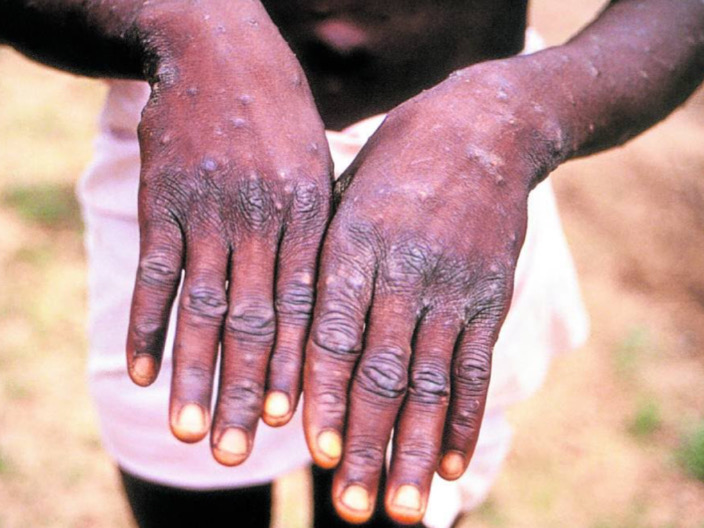8 Important Things to Know About the Monkeypox Virus

SHARE
Just when most of us are seeing the light at the end of the dark COVID tunnel, another threatening virus comes along. This time, it’s the monkeypox virus.
Recently, news about monkeypox cases are surrounding the online media. People are starting to worry if this new virus poses a threat as big as the coronavirus — at the same time earnestly hoping that it’s not.
This article will give you a rundown of the most crucial things you must know about the virus. We’ll talk about monkeypox’s symptoms, how it spreads, and if you should be worried.
- Monkeypox is not a new virus.
Monkeypox was first discovered in 1958 in a colony of monkeys used in research, hence the name. Lesions are similar to smallpox, with both diseases being caused by the same virus family, Orthopoxvirus.
However, it is important to know that monkeys are not the major carriers of the disease. It is a viral zoonotic disease which means it can spread from animals to humans, and between people.
The first human case of monkeypox was documented in 1970 in the Democratic Republic of Congo where the majority of infections are recorded.
- Monkeypox is typically found in central and west African countries, but now it’s spreading.
Monkeypox has two strains that have been endemic in Africa. Cases outside, that is non-endemic countries, are occasionally reported as a result of international travel or imported animals.
However, there have been reports of a virus outbreak spreading to 19 countries as of late May this year. The World Health Organization (WHO) says there are now 131 confirmed cases of monkeypox and 106 suspected cases even in non-endemic countries. These countries include the US, Australia, Canada, and other European countries.
- Monkeypox symptoms are similar to chickenpox: headache, fever, and rash.
Headache and fever are normal signs of one’s immune system fighting off an infection. Those are common symptoms of monkeypox, accompanied by a general feeling of being unwell along with muscle pains. It’s not very much different from chickenpox.
After several days, red spots or rash appear that then develop into pustules. These are usually concentrated in the face, palms of the hands and soles of the feet, and genitals. Lesions can be flat, raised, filled with clear or yellowish fluid, and may range from a few to thousands – which is one of the worst symptoms.
- Symptoms may last two to four weeks and will go away without treatment.
Photo from statnews.com
Monkeypox is a self-limited disease which means symptoms resolve spontaneously, without treatment. Symptoms can last up to four weeks but severe cases may occur with complications. Newborns, children, and those with underlying immune deficiencies and health conditions are more at risk.
In terms of monkeypox fatality rate, an overestimate of 3-6% reported cases have led to death in endemic countries.
- Monkeypox spreads through close physical contact.
The monkeypox disease spreads from animals to humans when a person comes into physical contact with an infected animal. Rodents and primates can be carriers.
Monkeypox can also be transmitted from one person to another by close physical contact. The rash, bodily fluids are very much infectious. Respiratory droplets from an infected individual as well as contaminated material can also cause infection.
- Monkeypox is ‘simpler to contain’ than COVID-19 and is not as contagious.
One concern that probably bothers people today is that we are just crawling our way out of a pandemic — so could monkeypox potentially be as damaging as COVID-19?
Experts and history shows that it’s not. Peter Hotez, a professor and co-director of the Center for Vaccine Development at Texas Children’s Hospital says that the monkeypox outbreak is “easier to contain than something like COVID-19.”
WHO explains that COVID and monkeypox are caused by different viruses and also spreads in a different manner. Dr. Rosamund Lewis, smallpox secretariat of WHO further explains how monkeypox is transmitted. She says, “The way it does spread is through close physical contact. People who have monkeypox do develop a rash and that rash, if you touch it, that can be contagious.”
In fact, there already was a monkeypox outbreak in the U.S. in 2003, but it was quickly contained.
- Smallpox vaccines offer some protection against monkeypox — but are no longer available.
Monkeypox experts also say that the smallpox vaccine tends to work well against monkeypox. It’s about 85% effective.
The thing is that smallpox has already been eradicated in the ‘80s and therefore vaccinations are no longer administered for several decades. Now, more and more of the human population don’t have immunity.
- Still, there are vaccines that work against monkeypox.
In 2019, a fairly new vaccine called Imvamune was developed and approved by the U.S. FDA to protect against smallpox as well as prevent monkeypox.
Should you be worried?
Just like what they say about most viruses, the longer a virus goes around, the more it is likely to evolve. Although monkeypox has more reassuring findings in terms of containment and transmissibility, it could still have the potential to be a global threat.
Especially now, it is not typical that there is a rising number of cases in non-endemic countries. It may be a sign that the disease is already evolving.
Hard as it may be, let us all try to worry less. Stay on guard and well-informed.
*Cover Photo/Thumbnail Photo from Reuters
RELATED ARTICLES

Christians Struggle to Guard Their Eyes

Don’t Underestimate the Transformative Power of Prayer

When Worship Feels Like Routine

How’s Your Relationship with the Holy Spirit?








